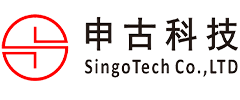Industry Trends in PCB Design

Printed circuit boards affect our lives in more than one way, touching virtually every moment of our lives - from the cell phones, we wake up to every morning, to geysers, toasters, cars, laptops, treadmills, food processors, TVs, entertainment systems, lighting consoles, massagers, and everything else we touch and experience has PCB driver functions that help us get things done.
With the increasing popularity of automation and cutting-edge electronics, industries ranging from aerospace to medical electronics to commercial electronics are embracing automation to provide advanced capabilities and functionality. This has led to the need for newer materials, faster and more efficient components, and improved PCB design and manufacturing techniques. PCB manufacturing is a competitive and technology-driven field that is constantly evolving. Here are some recent trends.
HDI
High Density Interconnect (HDI) is a manufacturing method to meet the growing demand for miniaturized products with more functions, especially in terms of routing traces. This feature reduces the number of layers and high-speed signal transmission in the PCB stack. HDI manufacturing faces the challenge of making traces considering the large number of traces that can be routed in a smaller area, leading to aspects such as noise and interference. Variants of this concept, including Every Layer Interconnect (ELIC) and Any Layer Interconnect (ALIC), will also experience strong growth over the years.
High Power Board (48V and Above)
There is an increasing focus on producing higher-power PCBs, including boards with supplies up to 48V. These voltage levels are driven by the growth of solar power, whose panels typically run at 24V/48V, and electric vehicles (EVs), which operate at hundreds of volts. These boards also need to handle very high currents to meet these new requirements. High-power PCBs are required to accommodate larger components such as battery packs and handle interference issues more effectively. These boards also require different packaging and mounting needs, as well as thermal requirements.
IoT (Internet of Things)
The Internet of Things (IoT) is a rapidly growing paradigm of controlling devices and appliances over a network. This multilayer design strategy requires fast wireless communication between layers and elements. The Internet of Things is powering smart homes, offices, and remote monitoring/control. One of the main challenges in IoT PCB manufacturing is ensuring that the various standards and regulations defined by governing bodies and authorities are met. These boards are also required to have a long life in harsh environments.
Flexible PCBs and Stretchable Electronic Circuits
Flex and Rigid-Flex PCBs are new to the world of PCB development and are gaining excellent market share. It is predicted that within the next few years, approximately one-third of all PCBs manufactured will be flexible. Flex boards offer higher functionality, smaller size, higher reliability, and more material choices.
However, there are several important aspects of flex manufacturing to consider before making a decision for your project. Stretchable electronics are new to the field -- promising a paradigm shift in the design, application, and use of electronic circuits. These stretchable circuits can be used in different applications such as wearable healthcare, industrial use, automotive, etc.
Commercial Off-the-shelf Components
COTS components, or commercial off-the-shelf components, are one of the other emerging trends attempting to introduce component standardization and reliability in critical space-based environments. Traditionally, components used to manufacture space applications have come under intense scrutiny. Regulation of components may decrease as the industry commercializes. An example of this is the standardization of the USB Type-C specification for small device charging infrastructure.
The above has introduced the industry trend of PCB design, if you want to order a PCB board, please contact us.
Singo is a professional custom PCB board manufacturer, mainly engaged in PCB assembly and OEM/ODM electronic manufacturing services since 2006. Products related to medical equipment, home appliances, digital products, industrial control, etc. After years of hard work, we have established long-term cooperative relationships with some excellent, internationally renowned companies. If you are looking for electronic PCBA OEM/ODM suppliers, welcome to contact us, we sincerely welcome you to visit our company.

